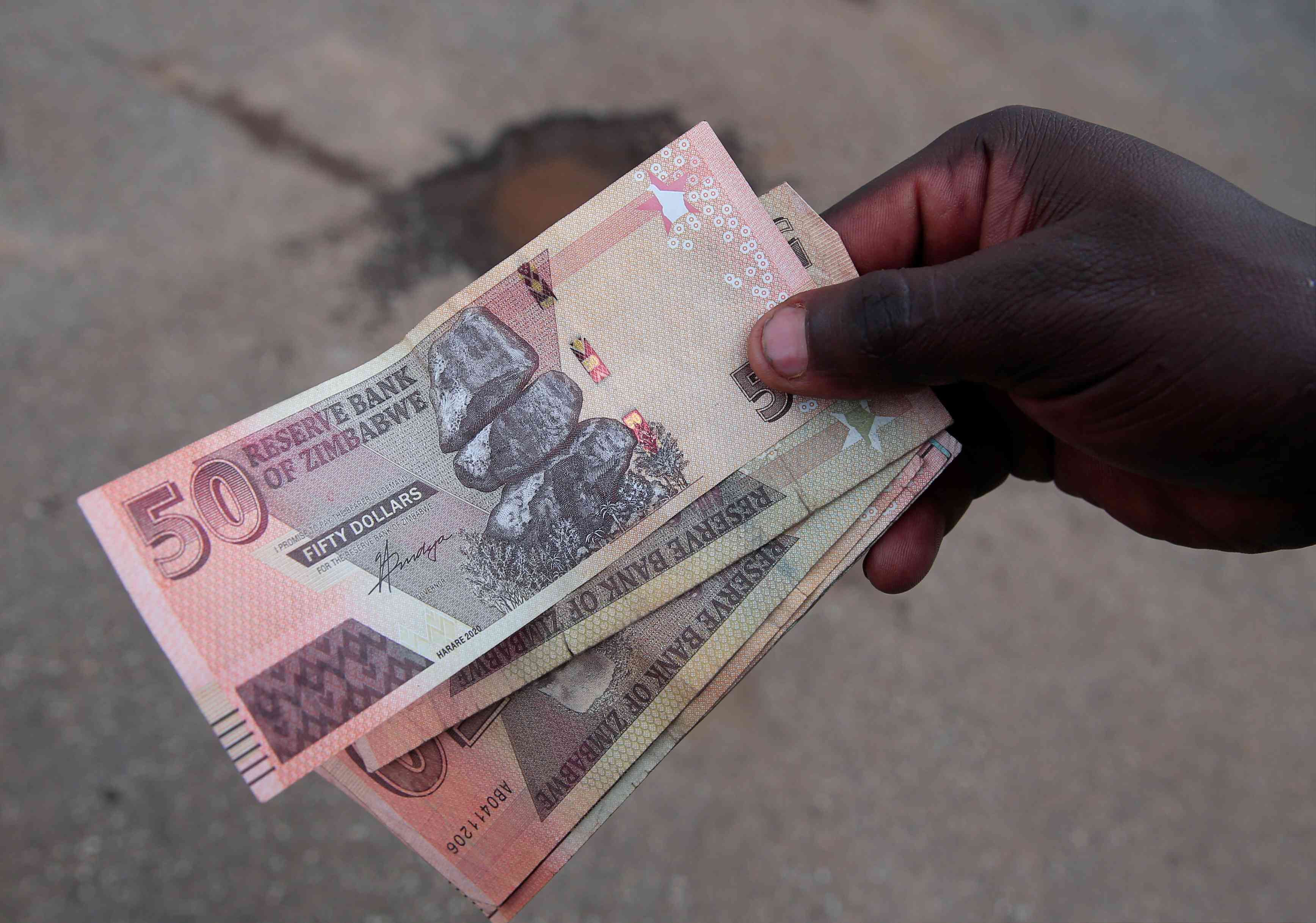
IN June 24, 2019, the Treasury officially reintroduced the Zimbabwe dollar as the sole tender and abandoned the pseudo currency, RTGS dollars, that had been adopted in February that year.
Upon its reintroduction, the local currency traded at $6,32 against US$1 in the official forex market, and US$1:$13,5 in the parallel foreign currency system.
Little did the Treasury know, however, that the market would reject the local unit after it failed to implement significant reforms to back it like reducing national debt and controlling the money supply.
By not implementing these measures, the local curency would depreciate to a current low of US$1:$10 152,39 on the official market and $16 700 on the parallel market.
In this article, we give a summary of major events that shaped this depreciation of the Zimbabwe dollar.
June 25, 2019 to March 28, 2020
Upon introducing the local currency, the Treasury banned the use of foreign currency to allow the Zimbabwe dollar to find its footing in the market.
The parallel forex rate becames the main source of foreign currency as increased trades make the greenback more valuable.
- DPC pays out $139 million
- Zimdollar shortage hits market
- Nedbank Zim profit surges
- Editor's Memo : Clean up procurement corruption
Keep Reading
As a result, a higher premium for the United States dollar in the parallel forex market compared to the official foreign currency exchange emerged.
It is during this period that the relationship between the money supply and Zimbabwe dollar emerged.
To try and increase the Zimbabwe dollar, the money supply rises nearly 228% to $48,4 billion in February 2020 from June 2019.
But, with the economy starting to slow down through countries implementing Covid-19 preventative measures to contain the spread of the virus, local trade begins to take a knock.
Thus, the rise in money supply amid slowing economic growth, leads to the Zimbabwe dollar depreciating by 303,95% to US$1:$25,53 in the official forex market.
On the parallel forex market, the local currency depreciates by 222,22% to US$1:$43,50.
The triple digits percentage drop-offs on both the official and parallel forex markets, tally with the increase in money supply over the period under review.
March 29, 2020
The multicurrency regime is returned owing to Covid-19.
The reintroduction of the multicurrency regime led to the Zimbabwe dollar appreciating against the greenback to US$1:$39 on the parallel forex market, as this meant that it was no longer the sole source of foreign currency.
To allow the multi-currencies to circulate and compete with the parallel forex market, however, the central bank adopts a fixed exchange rate system of US$1:$25.
April 2020 to December 2022
During this period, the money supply rose drastically on the backdrop of the introduction of the new Zimbabwe dollar notes $10, $20, $50, and $100.
It also rises as the government suppliers begin implementing forward pricing as well as charging for goods and services according to the parallel forex rate, owing to a higher premium.
The money supply is also pressured as the government raises civil servant wages as the cost-of-living rises owing to the parallel forex rate, which has become the de-facto official exchange rate.
However, with the average economic growth per annum being 1,8%, the government revenue does not rise in a significant way.
The government grows the money supply which becomes inflationary as it has no economic support.
By the end of 2022, the money supply has risen to $2,07 trillion, while the local currency has depreciated to US$1:$684,33 in the official market and US$1:$1 000 in the parallel market.
February 28, 2023
At the end of the month, the money supply shoots up as the government starts to pay its suppliers.
The money supply rises 25,32% to $2,92 trillion from the end of 2022.
However, the Zimbabwe liquidity still remained scarce owing to the money-mopping measures, leaving the local cuurency basically unchanged at US$1:$1 150, against the greenback on the parallel market.
But, as had been the norm for the months prior, the local currency depreciated even further by 30% to $889,13, against the United States dollar in the official forex market from December 2022.
April 1 to May 7, 2023
During this period, the Zimbabwe dollar had a remarkable drop off.
This was due to the lowering of interest rates that allowed for more borrowing leading to an increase on liquidity in the market and the government paying its contractors who were quoting prices using the parallel forex rate.
In the parallel forex market, the Zimbabwe dollar fell by 34,48% to US$1:$1 950 and nearly 20% to US$1:$1 112,72 officially by May 7 from the end of March.
May 8, 2023
The Reserve Bank of Zimbabwe-backed gold tokens are injected into the market, essentially backed by mineral royalties and part of the retained forex the central bank takes from export and forex domestic sales revenue. Zimbabwe liquidity continues to grow.
May 11, 2023
The Treasury issues several measures to save the falling ZWL that essentially promote its usage and mop up liquidity.
May 12 to May 24, 2023
Bidding for the United States dollar continues to rise on the forex auction as it has been challenging since 2021 to obtain foreign currency.
The reason is because the premium on the parallel market is causing foreign currency holders to hold their money and offload it in the parallel market.
The ZWL liquidity has drastically increased on the parallel forex market owing to the government paying its contractors and private sector borrowing owing to cheaper interest rates.
All these factors lead to the Zimbabwean dollar dropping off nearly 68% to US$1:$1 888,01 on May 24, marking one of the biggest single day drops in its history and largest for 2023. This is in the official forex market.
The massive drop of the Zimbabwe dollar’s value on the official forex market sends the local currency spiralling on the parallel foreign exchange market. The ZWL fell by 105,12% to US$1:$4 000.
June 27, 2023
The Zimbabwe dollar depreciates to its lowest rate for the year to US$1:$6 949, a 259% depreciation since a month prior. In the parallel forex market, the depreciation reaches US$1:$8 100.
This coincides with an increase in the money supply as suppliers continue with forward pricing in charging the government for goods and services.
Over the next few days, the government intensifies a ‘value for money’ audit on the procurement of goods and services which was first implemented in 2022 to curb its expenditure.
June 30, 2023
Owing to the pressures on government expenditure, the money supply closes the month at $14,27 trillion, a 97,21% increase from May.
However, while the month closes with an acceleration of the money supply, the intensification of the value for money audit leads to the local currency appreciating.
In the official forex market, this appreciation leads to the local currency appreciating to US$1: $5 739,8 and US$1:$7 900 on its parallel comparative.
July to December 2023
The value-for-money audits and promotion of the local currency result in the Zimbabwe dollar’s appreciation of US$1:$4 504,6 and US$1:$6 100 on the official and parallel forex markets, respectively.
Broad money stock falls to around $13 trillion compared to June.
However, the pressures previously mentioned on the money supply continue to remain a threat to the Zimbabwe dollar.
Resultantly, the local currency depreciates to US$1:$5 791 and US$1:$8 000 on the official and parallel forex markets, respectively. By the end of November, the money supply is $17,62 trillion.
December 1, 2023
The market woke up to a 2024 National Budget of $58,2 trillion presented the previous day, a significant increase from 2023’s initial budget of $4,5 trillion and later revised to $22,6 trillion.
The budget means an upwards revision in the charges of government suppliers and increased payments to civil servants, which lead to a massive increase in the money supply.
Again, without sufficient economic growth, the increase in money supply is inflationary and depreciates the local currency.
While official figures for December are not out, the increase in the money supply can be seen from the local currency depreciating to US$1:$6,104 and US$1:$12 000 to $13 000 on the official and parallel forex markets, respectively.
January 31, 2024
While bonuses have been paid, the revised expenditure for civil servant salaries and quotations from government suppliers continues to raise the money supply.
The local currency breaches the $10 000 mark, reaching a new low of US$1:$10 152 and US$1:$16 700 on the official and parallel forex markets respectively, since the Zimbabwe dollar’s return.










